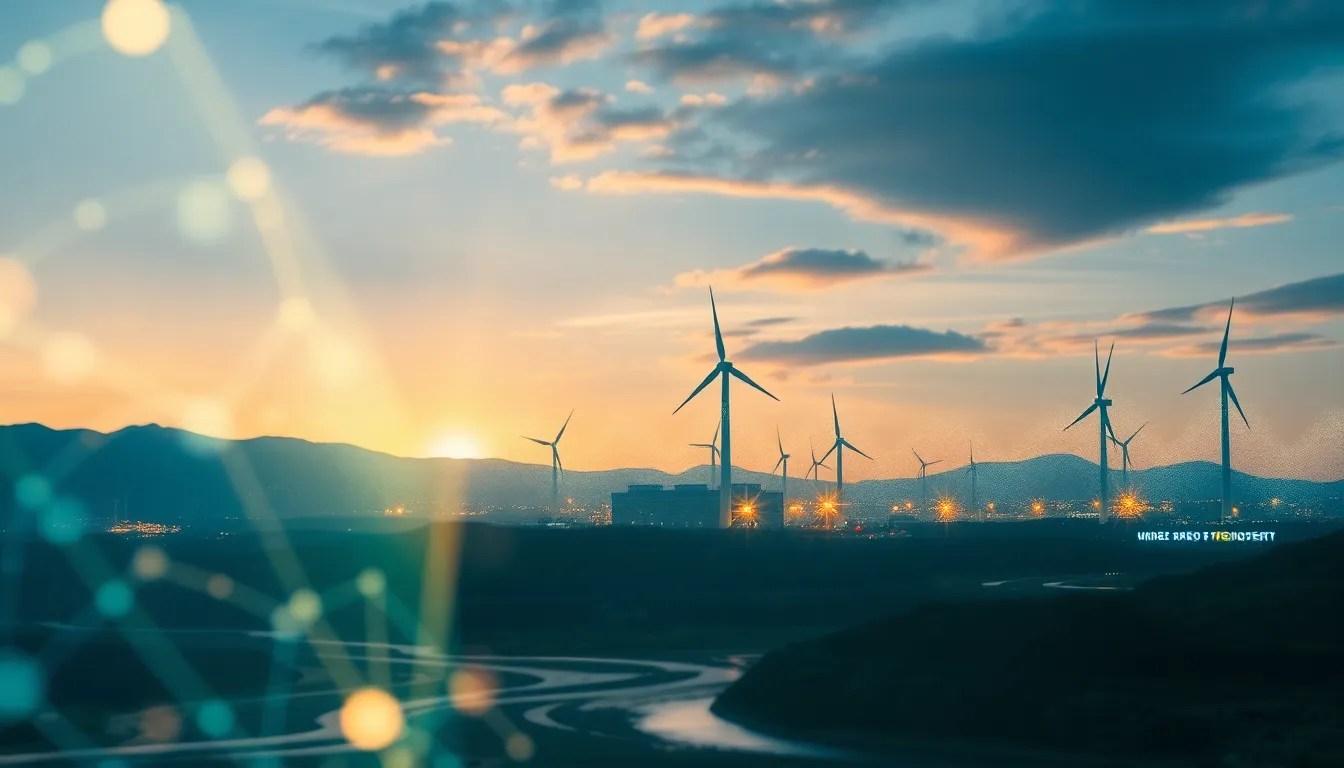How Data Visualization is Transforming the Energy Sector
I. Introduction
Data visualization refers to the graphical representation of information and data. By using visual elements like charts, graphs, and maps, data visualization tools provide an accessible way to see and understand trends, outliers, and patterns in data.
In the modern technological landscape, data visualization is essential as it allows organizations to turn complex data sets into actionable insights. It bridges the gap between big data and decision-making, making it easier for stakeholders to interpret data.
The energy sector faces numerous challenges, including the need for improved efficiency, sustainability, and effective grid management. Data visualization plays a crucial role in addressing these challenges by providing clear insights into energy generation, consumption, and distribution processes.
II. The Energy Sector Landscape
The energy sector encompasses several key components:
- Generation: The process of producing energy from various sources such as fossil fuels, nuclear, and renewables.
- Distribution: The transmission of generated energy to end-users, involving complex networks of power lines and substations.
- Consumption: The end-users’ utilization of energy, including residential, commercial, and industrial sectors.
However, the energy sector is currently grappling with significant challenges:
- Efficiency: Optimizing the generation and use of energy to reduce waste.
- Sustainability: Transitioning to renewable energy sources to reduce carbon footprints.
- Grid Management: Maintaining a stable and reliable energy supply while integrating diverse energy sources.
Moreover, the volume of data generated within energy systems is rapidly increasing due to advancements in technology, smart meters, and IoT devices, necessitating innovative ways to analyze and visualize this data effectively.
III. The Role of Data Visualization in Energy Management
Data visualization significantly enhances decision-making processes within the energy sector:
- Enhancing Decision-Making: Visual data representations allow stakeholders to quickly grasp complex data, enabling informed decisions.
- Real-Time Monitoring: Visualization tools offer real-time insights into energy consumption and grid performance, facilitating immediate adjustments and improvements.
- Predictive Analytics: By visualizing historical data trends, energy managers can forecast future usage patterns and plan accordingly.
Case studies have demonstrated the successful application of data visualization in energy management. For example, utilities that have implemented dashboard systems to monitor energy usage have reported increased operational efficiency and reduced costs.
IV. Applications of Data Visualization in Renewable Energy
Data visualization is particularly impactful in the realm of renewable energy:
- Tracking Renewable Energy Production: Visualization tools help in monitoring the output of solar panels, wind turbines, and hydroelectric systems, allowing for better resource management.
- Analyzing Energy Consumption Patterns: By visualizing consumption data, utilities can identify peak demand periods and optimize their supply strategies.
- Visualizing the Impact of Renewable Integration: Data visualization helps stakeholders understand how integrating renewables into the grid affects overall performance and stability.
V. Smart Grids and Data Visualization
Smart grids represent the future of energy distribution, incorporating digital technology to enhance the reliability and efficiency of electricity services. Data visualization is vital in facilitating the operations of smart grids:
- Definition: Smart grids use technology to collect and act on information about the behavior of suppliers and consumers in real-time.
- Facilitating Operations: Data visualization tools provide insights into grid health, energy flows, and demand levels, allowing for proactive management.
- Examples: Technologies such as advanced metering infrastructure (AMI) and demand response systems utilize data visualization to improve customer engagement and grid efficiency.
VI. Data Visualization Tools and Technologies in the Energy Sector
Several powerful data visualization tools are transforming the energy sector:
- Tableau: Offers intuitive drag-and-drop features for creating interactive dashboards.
- Power BI: Integrates with Microsoft products and allows for in-depth analysis of energy data.
- Custom Dashboards: Many organizations develop tailored solutions to meet specific visualization needs.
Additionally, the combination of machine learning and AI is enhancing visualization capabilities, enabling predictive analytics and automated insights that are vital for energy management. Looking ahead, future trends may include greater integration of augmented reality (AR) and virtual reality (VR) in visualizing energy data.
VII. Challenges and Considerations
Despite the benefits, several challenges must be addressed:
- Data Quality and Integration: Ensuring accurate and consistent data from multiple sources is crucial for effective visualization.
- Accessibility and Usability: Visualizations must be user-friendly and cater to diverse stakeholders, from technical experts to laypersons.
- Privacy and Security: Protecting sensitive energy data from cyber threats is essential as data visualization becomes more prevalent.
VIII. Conclusion
Data visualization is transforming the energy sector by providing clear insights that facilitate better decision-making, enhance operational efficiency, and promote the integration of renewable energy sources. As the energy landscape continues to evolve, the need for effective data visualization will only grow.
Looking to the future, energy professionals should embrace data visualization technologies to harness the power of data in managing energy resources effectively. The time to act is now, as the transition to a more efficient, sustainable, and intelligent energy system is underway.



